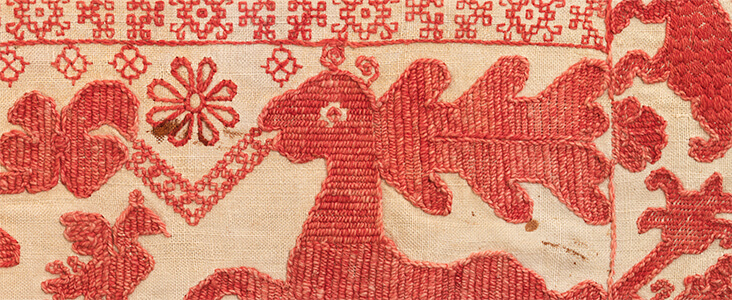A Deeper Look at Perception
In a world dominated by fast fashion, the relentless pursuit of the ‘new’ not only desensitizes us to the artistry within each garment but also alters our perception of textiles as a craft steeped in tradition and skill. This disposability extends beyond the clothes themselves, seeping into our collective appreciation for the rich and diverse world of textiles.
At the heart of fast fashion lies a fundamental shift from artisanal craftsmanship to mass production. The demand for speed and cost-effectiveness often overshadows the nuanced artistry involved in creating textiles (Welters & Lillethun, 2011). The intricate dance of weaving, dyeing, and embellishment, once celebrated as a form of artistic expression, becomes subservient to the demands of large-scale manufacturing.
The mechanization and standardization of textile production, while enhancing efficiency, sacrifice the individuality and uniqueness that define traditional craftsmanship (Fletcher, 2008). In this era of rapid consumption, the origin stories embedded in every fiber are overshadowed by the constant turnover of trends. What was once a testament to human ingenuity and creativity has been relegated to a commodity, discarded as swiftly as it is embraced.

The repercussions of this shift extend beyond the aesthetic realm into environmental degradation. The breakneck speed at which fashion cycles through trends fuels a cycle of waste, where garments are worn briefly and discarded without a second thought (Bhardwaj & Fairhurst, 2010). Mass-produced textiles, often created with little regard for sustainability, contribute significantly to pollution and resource depletion.
This relentless pace not only harms the environment but also disconnects us from the intricate processes that result in the clothes we wear. Textiles, once revered for their role in cultural expression and identity, are reduced to mere commodities designed for quick consumption. The more we distance ourselves from the journey of textile creation, the easier it becomes to ignore the ethical and environmental implications of our choices.

Perception Shift: Rediscovering the Artistry
Amidst the sea of disposable fashion, there is a growing movement to rediscover the artistry within textiles. Artisans, designers, and consumers are recognizing the value of slowing down the production process, embracing craftsmanship, and celebrating the stories woven into each fabric (Fletcher, 2012). As we bridge the gap between mass production and artistic expression, we begin to reimagine textiles as more than just items of clothing.
By fostering a deeper connection with the textiles we wear, we open the door to a renewed appreciation for the intricate processes that bring them to life. This shift in perception is not just a return to the roots of craftsmanship; it’s a rebellion against the notion that fashion should be fleeting. It’s an acknowledgment that textiles are not just commodities; they are vessels of culture, history, and human expression.
In confronting the textile dilemma posed by fast fashion, the power to change lies in our hands – as consumers, as advocates for sustainability, and as individuals seeking a more meaningful relationship with what we wear. By choosing quality over quantity, valuing the artistry within textiles, and embracing a conscious approach to fashion, we can collectively reshape the narrative surrounding our clothing (Fletcher, 2010). In doing so, we contribute not only to a more sustainable and ethical industry but also to a rediscovery of the profound beauty woven into every thread.

As we navigate the intricate tapestry of fast fashion’s impact on our perception of textiles, the call for conscious consumption becomes ever more crucial. Academic research by Fletcher (2016) emphasizes that our choices as consumers shape the industry and the environment. By understanding the environmental toll of disposability and the importance of preserving artistic expression in textile creation, we pave the way for a more sustainable future.
In confronting the challenges posed by fast fashion, we must consider the work of Welters and Lillethun (2013), who highlight the need for a paradigm shift toward sustainable fashion. This shift not only benefits the environment but also contributes to the preservation of textile traditions and craftsmanship. It is through this conscientious approach that we can unravel the threads of disposability, weaving a narrative that honors the artistry within each textile and, in turn, shapes a more sustainable and ethical fashion landscape.
In a future blog I will discuss how we might consider supporting traditional textile makers without colonizing them.
References:
- Bhardwaj, V., & Fairhurst, A. (2010). Fast fashion: response to changes in the fashion industry. The International Review of Retail, Distribution and Consumer Research, 20(1), 165-173.
- Fletcher, K. (2008). Sustainable fashion and textiles: design journeys. Routledge.
- Fletcher, K. (2010). Slow fashion: An invitation for systems change. Fashion Practice, 2(2), 259-266.
- Fletcher, K. (2012). Durability, fashion, sustainability: The processes and practices of use. Fashion Theory, 16(3), 311-328.
- Fletcher, K. (2016). Craft of use: Post-growth fashion. Routledge.
- Welters, L., & Lillethun, A. (2013). The Fashion Reader. Oxford Berg.

Leave a comment